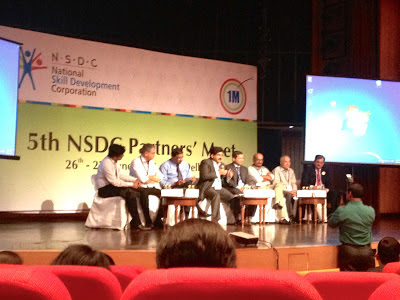- by Janie Lee
In an article posted by Forbes India on July 10 2013, Dinesh
Narayanan looks at the vocational skilling landscape in India. The article
touches on a few of the issues that pose fundamental challenges to achieving
the ambitious goal of training 500 million youth by 2022. Among these concerns
are on-the-job training, certification, and a lack of meaningful interaction
between stakeholders. Ultimately, Narayanan drives home the point that policy
must be “democratically made and autocratically implemented.”
While both the private and public sectors are grappling with
the right strategy to implement on an autocratic level, individual
organizations are finding degrees of success in placing students and recovering
fees. By sharing best practices and innovative models, all stakeholders can
have more input in determining which strategies could and should be scaled up. Only
then can policy be made democratically.
On a smaller scale, Pratham has had varying levels of
success attempting to create training and placements for youth in India. The
methods below highlight the successful practices that address some of the
concerns that Narayanan has mentioned in his article. We hope to continue an
honest conversation about what is and is not working within the vocational
skilling landscape in India and invite others to do the same.
Strategic
Partnerships
Former labor minister Mallikarjun
Kharge stressed the need for active involvement between the public and private
sectors in order to sure proper and high-quality implementation of programs. Within
each of Pratham’s industry-specific programs, we have partnered with industry
leaders and the National Skills Development Corporation (NSDC). The partners
serve as knowledge partners and support organizations for students from
beginning to end. Partners such as L&T gives us financial support, whereas
others like Taj provide industry exposure through on the job training for one
week. As knowledge partners,
organizations provide oversight during the setup phase of each center, help
develop course content, share assessment tools, provide joint certification,
provide placement linkages, and help audit the center to ensure high-quality delivery
of training.

















